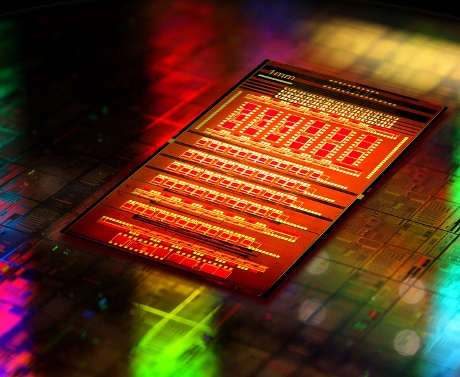Super-Duper Linux Computers


Today the fastest of the fast computers is the Tianhe-1A Running full-out, it hits a peak performance of 2.57 petaflop/s (quadrillions of calculations per second).and cruises along at 563.1 teraflops. To do this, it uses 14,336 Intel Xeon CPUs and 7,168 NVIDIA Tesla GPUs and Linux.
That's impressive. The Tianhe-1A easily races past the Cray XT5 "Jaguar" system at the U.S. Department of Energy's (DOE) Oak Ridge Leadership Computing Facility in Tennessee. That Cray XTS super-computer is now ranked in second place at 1.75 petaflop/s.
Don't start weeping for the decline of American technology prowess yet, though. IBM's new addition to its POWER7 chipset uses Silicon Integrated Nanophotonics to reach new heights in processor speed. In these chips, light instead of electronics is used for its input/output (I/O )interconnects.. This makes it possible to build faster--much faster--super-computers, and eventually servers and PCs.
The first fruit of this breakthrough in chip design is going into Blue Waters, a joint effort of the University of Illinois at Urbana-Champaign's National Center for Supercomputing Applications (NCSA), IBM, and the Great Lakes Consortium for Petascale Computation (http://www.greatlakesconsortium.org/). This computer, to quote a friend of mine who works at IBM and was feeling his oats, will "make the Chinese monster look like a digital watch by comparison."
I don't know if will be that fast, but it will be a lot faster. It's expected that Blue Waters will have a peak speed of 10 Petaflops/s, about four times faster than Tianhe-1A. The Chinese, to be sure, won't resting on their laurels. They'll also be working on ever-faster computers.
This new light-based computing, still in its infancy, has potential to reach Exabyte levels of computing by decade's end. Exabyte? That's about 100 times faster than Blue Waters will run in 2011. My buddy, Jason Perlow, talks about what that means in his story, Exaflop computing: Moore's Law isn't dead, It's Moved to Warp Speed.
While the core technology is new, the operating system isn't. Blue Waters designers have already decided that Linux is what the super-duper computer Blue Waters will need. As Blue Waters' deputy project director, William Kramer, explained in the press release: "We looked at the features that will be part of each OS in 2011, not just the features available today."
AIX, IBM's house brand of Unix, was also considered, and while "We determined that either OS could ably meet the requirements for Blue Waters and serve the science and engineering research community," Kramer said, "Linux offered some additional advantages, such as being somewhat more familiar to the research community and offering the potential for NCSA to more directly participate in enhancing the OS."
Although the fundamental technology is ready to go, there is one problem. As Peter Beckman, recently named director of the newly created Exascale Technology and Computing Institute, said in an interview recently, "We [the U.S.] are not producing enough high-quality science and technology Ph.D. students. When we open up a post-doc position for an expert in this particular computer science field, we have to look hard to find people. There is not an overflow of these people, it's a thin group."
That's a serious worry. While we have an operating system, Linux, that works well for super-computing, we still need advanced system designers and programmers to put the operating system and the hardware to its most effective use, Here's hoping we find them.